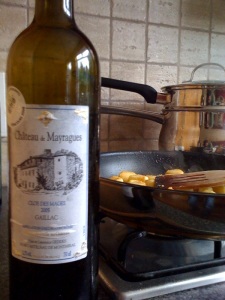Back in Easter I visited the Tarn region (Gaillac to be precise) of France with my wife and two good friends – we rented a farmhouse among vineyards and spent most of our time eating, drinking and playing this awesome card game called Pit. That and making sure we took in some Pro D2 rugby – Albi v Racing Metro. I got to see the legend that is Andrew Mehrtens play which pretty much made my holiday.
Anyway Gaillac is a pretty traditional wine region (the first of the Gauls apparently), using primarily local grapes such as Loin de l’Oeil, Mauzac, Ondenc as well as Sauvignon Blanc and Muscadet for the whites; and Duras Fer Servadou, Braucol with Syrah, Cab Franc, Gamay and others for the reds. Taking into account the relatively large size of the appellation and the wide selection of permitted grapes there were many different styles, and many different qualities. What struck me though generally was the health – or lack of it – in the vineyards. With no leaves on the vines it was easy to see the problems with soil erosion due to heavy handed use of chemicals.
By complete accident one day we happened on Chateau de Mayragues, the only certified biodynamic producer in the region. Aside from being a stunning Chateau, the owner Alan Geddes is a scottish born astro-physicist who has become a huge supporter of biodynamics. He believed that a lot of Steiner’s principles of biodynamics could be explained through astrophysics and an understanding of the relationship between the earth and space. Heavy stuff but ultimately fascinating. His wines were superb! The show stopper for me was his white 2005 Clos des Mages Blanc. It had been open, with no vacuum seal, for four days and still tasted fresh. I didn’t, and still can’t, understand how that was.
To come full circle I brought a bottle of it home and had it with some Sea Bass, crushed caeser potatoes and rocket salad. Beautiful. I was so wrapped up in discussing biodynamics at the time however that I didn’t write any notes. I think it cost around €9 at the cellar?
2005 Chateau de Mayragues, Clos des Mages Blanc
 Out of the frying pan, into my glass
Out of the frying pan, into my glass


